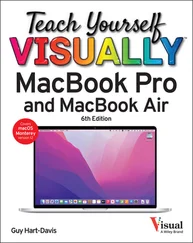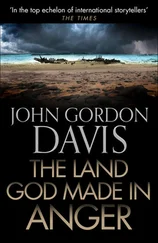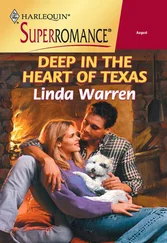The cut grass was evenly spread with pitchforks until it had begun to dry in the sun, giving off a delicious smell like that of biscuits cooking; then it was turned and left until it was ready to be collected, either by hand or by a horse-drawn rake with long, curved, downward-facing tines, which could be lifted clear of the ground by pulling a lever. A boy riding jockey on the rake had to pay attention, for if he fell off he might be impaled on the tines before he could stop the horse.
Every available person and every available vehicle joined in. In the summer of 1940 the actress, singer and monologist Joyce Grenfell turned out to help at Cliveden, the Astors’ home in Buckinghamshire, driving a twelve-year-old, two-seater Chrysler. ‘Now it is entirely paintless, bonnetless, brakeless, roofless, floorless and hornless,’ she wrote of the car,
but still it goes in bottom gear. It is equipped with a giant wooden comb-like device that is fixed on in front. You drive the car along rows of raked hay and this arrangement collects it up. When you have enough you steer off the row into the open and deliver your load in a part of the field near the rick. To unload you merely reverse; in fact, that is the only means of stopping anyway!
Loaded onto horse-drawn wagons, the hay was transported to the farm, where, again, pitchforks lifted it onto a rick. The entire process was labour-intensive, and greatly dependent on the weather: for good hay, dry days and hot sun were essential. As one reader of The Farmers’ Weekly remarked, ‘Of course, the ideal is to have ideal weather, but only in the fields of Elysium is the ideal continuous.’ In the rick, during autumn and winter, the hay gradually solidified, so that when it was needed for feeding horses and cattle, slices of it had to be cut as if from a loaf of bread with a knife three feet long.
After haymaking, the busiest time of year was harvest, from July to September, when everybody again joined forces to bring in the corn. Cutting and stooking were only the start. The next step was to load the sheaves onto a cart, passing them up one at a time with a pitchfork to a man who had the skill to lay them in overlapping layers so that they bound each other in and did not slip off as the cart lurched towards the farmyard on its wooden wheels. Once there, the process had to be repeated: an elevator ferried the sheaves up onto a rick, and again a skilled operator built them up so that they would hold together and not slide outwards.
By the beginning of the war a few early combine harvesters were working, but these were large, inefficient contraptions and needed tractors to pull them – which meant that a good deal of the corn was flattened ahead of the cutter. The first self-propelled prototype, the Canadian Massey-Harris M-H 20, which appeared in 1938, travelled at four miles per hour without running down any of the crop, and cut, threshed and delivered a continuous stream of grain into sacks. Two men were needed to operate it – one to drive, and one to stand on a platform at the back, changing the sacks and sliding them off onto the ground when they became full. As each of them weighed 200 lb or more, and they were scattered about the field, collecting them up and lifting them onto a wagon was no easy task – and then at the farmyard they had to be carried up a long plank or flight of steps and tipped into the barn.
Other farm tasks were less dramatic. Ploughing was one of the slowest, demanding skill, patience, strength and stamina. Although even early tractors could plough far faster than horses, many people clung to the old ways. Angus Nudds, who started work on a farm in Wiltshire when he was fourteen, and later became a gamekeeper, remembered, ‘Not many people have had the pleasure of ploughing with horses.’
Instead of the roar of the tractor, there was just the occasional gentle cough of one of the horses, the sound of the soil coming off the plough-share, the jingle of the harness and the constant cry of the seagulls which competed for the worms that were turned up out of the ground. I loved working with horses; they are such noble animals, not asking much out of life, just a warm stable, some good food and a bit of kindness, and they repay you by working for you eight hours a day.
No one endorsed those feelings more warmly than John Stewart Collis, an intellectual who worked as a farm labourer in Sussex and Dorset from 1940 to 1946. Already almost forty when the war broke out, he opted for work on the land and wrote two classic books about it, While Following the Plough and Down to Earth , which he later combined into a single volume, The Worm Forgives the Plough . Precise, accurate and never for a moment boring, he described the ancient rituals of farming in a marvellously lucid narrative of day-to-day tasks and events.
He scarcely mentioned his wife Eirene and two daughters, whom he packed off as evacuees to America: he referred but rarely to Bindo, the devoted dog which always accompanied him. His whole narrative was dedicated to describing work on the land, and he wrote about the most basic tasks with lyrical grace. Like Angus Nudds, he loved ploughing with a horse:
Your feet are upon the earth, your hands upon the plough. You seem to be holding more than the plough, and treading across more than this one field: you are holding together the life of mankind, you are walking through the fields of time.
Most farm workers’ language was as old-fashioned as the plough. In many counties ‘w’s were dropped – for example, the word ‘woman’ was pronounced ‘ooman’, and grammar was all over the place. When an old gamekeeper agreed that one of the park deer looked poorly, and said, ‘Arr, I seed one up there crope about fairish’, it was clear that he meant the animal looked pretty sick. No point in telling him that ‘seed’ was not the past tense of ‘see’, nor ‘crope’ that of ‘creep’. One day Jack Hatt, who farmed at Checkendon in Oxfordshire, returned from market to see Olive, his Shire horse, lying prostrate on the field, with the ploughman, Danny, standing disconsolately beside her.
‘Danny! Danny!’ cried Jack, running up. ‘What’s wrong with Olive?’
‘Blamed if er didn’t go and die on me,’ Danny answered, ‘and I’ve never knowed she do that afore.’
Two
His way is still the obstinate old way,
Even though his horses stare above the hedge,
And whinny, while the tractor drives its wedge
Where they were wont to serve,
And iron robs them of their privilege.
The Yeoman, from Vita Sackville-West’s The Land
The Emergency Powers (Defence) Act, passed on 1 September 1939, gave the Ministry of Agriculture drastic powers to intervene in the countryside. When the Government announced that it would pay £2 for every acre of old grassland ploughed up, there was a stampede of applications. By the middle of September 12,000 farmers had applied, and 220,000 acres had qualified for the grant. On 15 September The Farmers’ Weekly declared:
Within the last ten days the whole face of British farming has been transformed. The industry … has been brought under a degree of Government control which has never been experienced before, and which only a few weeks ago would have been unthinkable. Maximum prices have been fixed for many of the things the farmer has to buy or sell. Within certain limits he will be told what he may or may not grow. Many of his younger employees will be taken away and replaced by labour which, in many cases, will be less efficient.
In a national farm survey owners and tenants were required to record the condition of their land – the nature of the soil, the acreage of arable crops and grass, the areas that were derelict, the state of their cottages, buildings, tracks, fences, ditches and water. They also had to declare if their property was infested with rats or rabbits, and to suggest ways of improving land in poor condition. The survey, which took more than two years, was an enormous undertaking: there were 300,000 farmers in England and Wales, and as one expert pointed out, ‘No two farms were identical in soil, in layout, in buildings or in climate; no two farmers, in temperament, training and experience.’
Читать дальше












